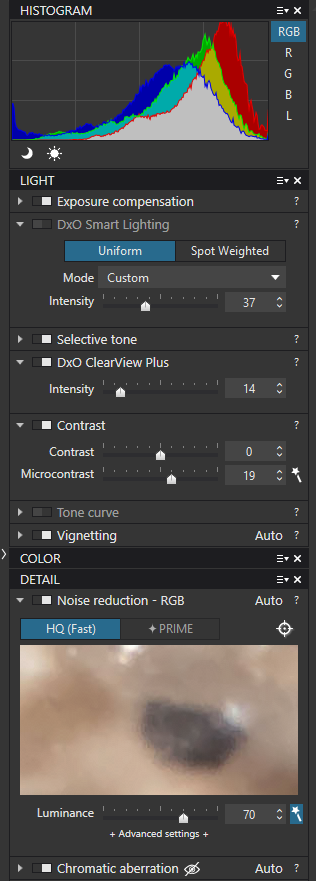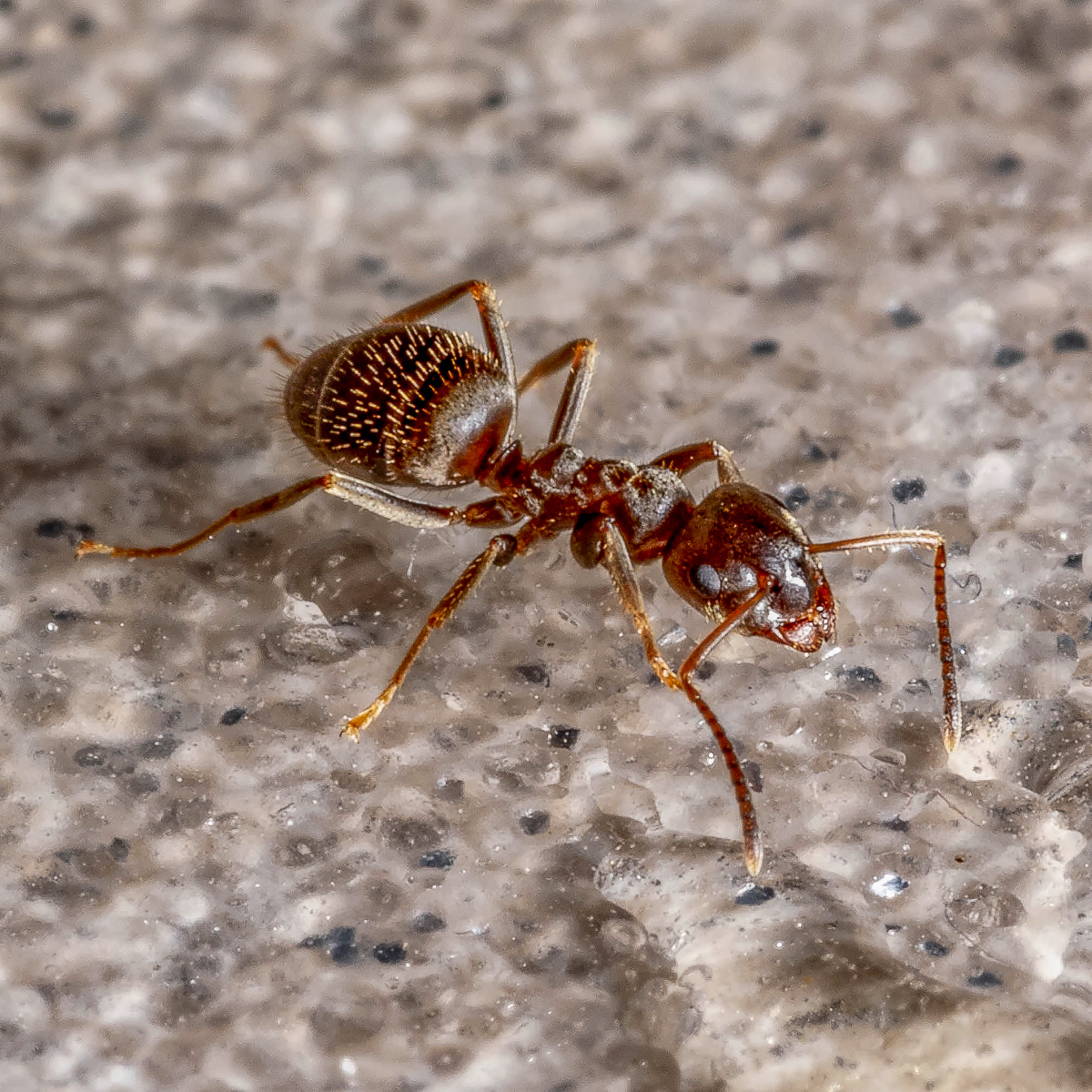Thanks for the comment and thanks for your work on the re-works.
I shot these images in RAW originally... The flash is a manual flash using a hotshoe transmitter (the d3300 doesn't have commander mode) so it shows that the flash didn't fire, but it does force flash in manual when the hotshoe is occupied.
Ah, understood. Thanks.
I'll try again tomorrow with some different settings, this was F40 shot with full power flash real close to the subject... hence the harsh light you have mentioned.
I'll try and drop the Fstop down to f22 and take that light either further away to bring a softer light, or knock down the power on the flash to see if this helps. I do think the lens allows a f5.6 at 1:1 magnification, as you can imagine the focal plain on this is so miniscule for an ant is unusable without focus stacking.
Yes, that would be a nominal (not adjusted for magnification) f/2.8 (that is what you would see on other cameras such as my Canon 70D) to give an effective f/5.6 at 1:1 (which is what your D3300 is telling you). As you may know,
Effective f-number = Nominal f-number * ( 1 + magnification), approximately
The small aperture need not be a problem. I generally use the smallest aperture I have available for invertebrates, and with my setups that is generally equivalent to around f/30 on your setup. Most people won't use apertures that small because of the loss of fine detail from diffraction. I prefer the wider depth of field from small apertures and am willing to put up with the loss of detail. I believe post processing takes on greater significance with small apertures so as to recover from, or mask, at least some of the effects of diffraction. Here is a somewhat similar ant photo captured at around f/30 equivalent for your D3300.

P1260420_PLab SP7 LR 1024w by
gardenersassistant, on Flickr
As it happens it was captured with a 12 mpix small sensor bridge camera, which is my most used setup for invertebrates. However, in my experience there is no particular advantage or disadvantage to using a small or a large sensor when using very small apertures - because of the diffraction the images from different sensor sizes all look much the same.
I just reprocessed that one from raw to use it here, and the processing involved first DXO PhotoLab, then Silkypix, then Lightroom, each one used for aspects of the processing that I think they are particularly good at. This screenshot shows the Lightroom settings in the final stage of the processing and the crop I used. One of the things you can do to increase depth of field is to use less magnification and crop. The result will be reduced detail and extra noise, but you may still be able to get an acceptable result. I think that, for me at least, part of the craft of close-up/macro is to know how far you can push in various directions, to what effect, and what the trade-offs are, so as to get the best result for a particular purpose (e.g. for viewing on screen at a particular size).

GA Lightroom Crop and settings for GA ant by
gardenersassistant, on Flickr
Can i ask what changes you made to the image in post? It seems to have been sharpened using the detail tab, an increase of clarity, a touch of vibrance/saturation and exposure changes?
I used PhotoLab on it first. Then Lightroom. I would have used Silkypix in between, but Silkypix didn't like the TIFF file that PhotoLab produced from the original JPEG. Here are the settings I used for PhotoLab. I don't understand why it applied so much noise reduction. I used one of my PhotoLab presets and it doesn't do that with my JPEGs. If I had noticed that at the time I would have turned the noise reduction down or, more likely, off.

GA PhotoLab settings for Andrew Gray ants by
gardenersassistant, on Flickr
and the settings for Lightroom.

GA Lightroom settings for Andrew Gray ants by
gardenersassistant, on Flickr
One thing that doesn't show up here is that I used graduated filters to try to offset the unbalanced illumination from the flash. Here is one of them.

GA Lightroom graduated filter for Andrew Gray ant by
gardenersassistant, on Flickr
My images often start out quite dark because I try to expose so as to protect highlights. You can always do something to brighten up shadows (you might have to deal with some noise), but unless you get into cloning, which in my hands at least often doesn't produce a credible result for invertebrates, if an area is blown (in the raw file) there is nothing you can do to recover it.
 DSC_8269.jpg by Andrew Gray, on Flickr
DSC_8269.jpg by Andrew Gray, on Flickr DSC_8288.jpg by Andrew Gray, on Flickr
DSC_8288.jpg by Andrew Gray, on Flickr DSC_8239.jpg by Andrew Gray, on Flickr
DSC_8239.jpg by Andrew Gray, on Flickr DSC_8269.jpg by Andrew Gray, on Flickr
DSC_8269.jpg by Andrew Gray, on Flickr DSC_8288.jpg by Andrew Gray, on Flickr
DSC_8288.jpg by Andrew Gray, on Flickr DSC_8239.jpg by Andrew Gray, on Flickr
DSC_8239.jpg by Andrew Gray, on Flickr









 DSC_8449.jpg
DSC_8449.jpg DSC_8465.jpg
DSC_8465.jpg wood ant 27
wood ant 27